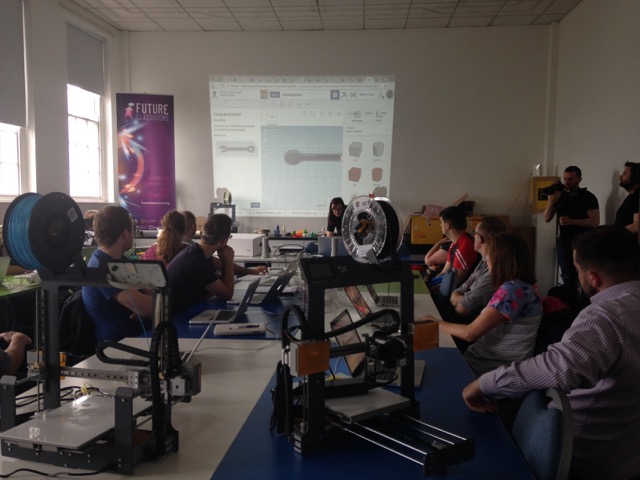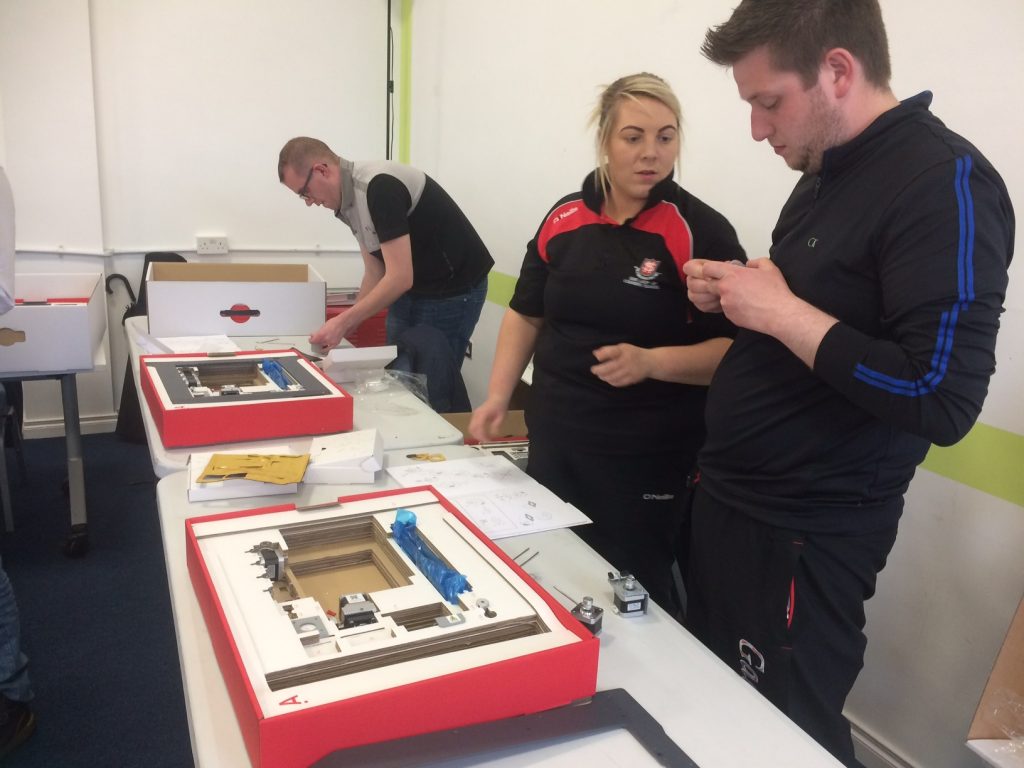This is an article in our new series looking at how 3D printing is used around the world and reporting on ways to get involved in 3D printing.
3D Printing at Northern Ireland’s Nerve Centre By John Peto
An exciting new project in Northern Ireland is bringing 3D Printing to new users in schools. The Nerve Centre, a creative media arts and education centre, has developed a new 3D printing project, offering 16 schools across Northern Ireland the opportunity to build their own Hephestos 2 3D printer, along with training on how to use it across the curriculum.

And once the teachers have built the 3D printer and shown that they can use it, it is theirs for their school to keep.
The Nerve Centre is also home to one of Ireland’s first FabLabs, which delivers community access to training and education around digital design and fabrication for learners of all ages and abilities. Furthermore, the Nerve Centre delivers curriculum mapped training in Creativity, Technology and STEAM based learning to almost 5,000 teachers per year.
Making 3D printing accessible to schools
The aim of this project was to make 3D printing accessible to schools and teachers who had an interest and enthusiasm in introducing 3D printing within their class. The teachers did not have to have any technical skills in 3D printing, all that was asked was that they have the drive and ambition to learn and deliver an in-class project.
The desire to use 3D printing within schools was evident, with 75 schools, both primary and post-primary from across Northern-Ireland, applying to participate in the project. After a lengthy selection process, 16 schools were selected to take part.
Mr Patrick Gill, Primary 6 Teacher from Holy Family Primary School in Derry, a successful participant in this project stated,
The reason we wanted to be involved in this project was due to the advantages of using 3D printing within our school: it is cross-curricular, enables problem solving, encourages pupils to work as a team, develops collaboration, teaches the pupils to compromise, improves spacial awareness, boosts creativity and promotes entrepreneurial thinking. Each of these advantages promote important life skills which the children need to develop. Not only would a 3D printer promote learning, it would also promote and further staff as they learn about and use this new technology.

Preparing students for the jobs of tomorrow
As 3D printing is expanding within industry, it is important that we prepare our students for jobs within this sector. The only way we can do this is to ensure that children today are exposed to and have experience of all forms of technology. It is therefore important that our schools and teachers are presented with opportunities to embrace new technologies within the classroom.
Twenty teachers from 16 schools attended two half day workshops at the Nerve Centre’s Creative Learning Centre in Derry, where each school was presented with their very own BQ Hephestos 2, build your own printer kit.
During the first workshop there was a mixed feeling within the room, one of both excitement and fear, as most of the teachers had never even seen a 3D printer in close proximity, never mind built and operated one.
A few minutes into the build the atmosphere in the room was electric, as the teachers from schools across Northern Ireland were all helping one another build their 3D printers. After the first workshop each of the teachers took their printers back to their school where they finished building and testing out their printer.
The following week each of the teachers returned to the Nerve Centre for their second workshop, which focused on 3D modelling and slicing software used to create 3D designs and products on the Hephestos 2 printers.

Each school has devised their own unique 3D printing project, which they will fulfill in the new academic year (starting September 2017). Some of these projects include: creating models of viking longships, to help primary 6 pupils learn and understand theses vessels when studying The Vikings.
Other groups created a cross-curricular project with year 5 pupils to develop bird houses and feeders or reproduced sound waves and instruments in Music in order help students understand the concept of sound. One group of Year 8 Geography students using 3D printing to make a working digital compass.
A Mathematics teacher from Mercy College, Belfast stated, “I have found that students often learn best when we get them out of the classroom and see math in real life, for example, measuring car parking spaces or the inside of the gym. A 3D printer allows us to take these findings and introduce scale, something many students find it hard to get their head around.”
Each of the teachers will return to the Nerve Centre in the new academic year to share the result of their own projects, along with their personal experience of using 3D printing within their school.
This project was funded by The Department for Communities and Northern Ireland Screen.

This is an article in our series looking at how 3D printing is used across the world. Contact us if you would like to participate.


